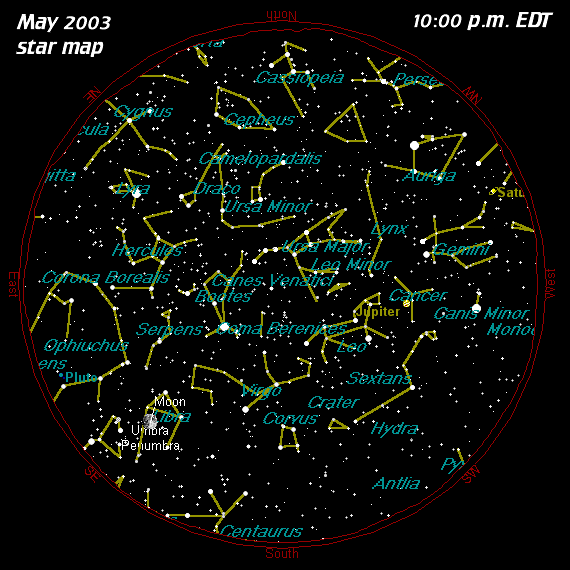



![[Moon Phases]](../moonphases/2003-05-phases.jpg) |
|---|
![[May 15-16 Lunar Eclipse]](5-03-lunar-eclipse.gif) |
|---|
![[May 15-16 Eclipse Participants]](5-03-eclipse-participants.jpg) |
|---|
| The Dieruff Contingency of student volunteers stands ready to help the public view the total lunar eclipse of May 15-16 2003. Unfortunately the weather had other plans and observations fell through due to overcast skies. From left to right are Emily Plessl, Sarabeth Brockley, Abdiel Cancel, Chris Fernandes, and Gary A. Becker. G. A. Becker digital photo... |
 |
